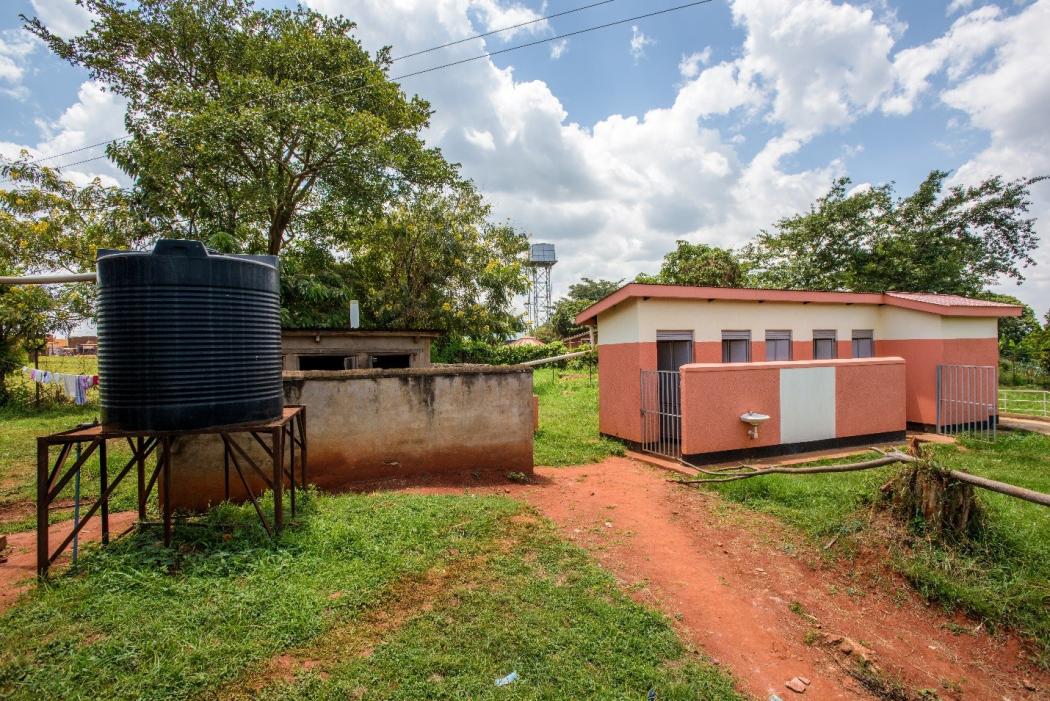Improving Health Services and Facilities through WASH

Health clinic latrines and water put in by World Vision at Ntwetwe Health Center IV, next to the old system on the left. Photo Credit – Jon Warren, World Vision, 2016
By Lisa Bos, World Vision
In 2015, the World Health Organization (WHO) and UNICEF released the first multi-country review of water, sanitation and hygiene (WASH) access in health facilities. The report looked at 54 low- and middle-income countries. The results were staggering.
According to the report, 1 in 3 health facilities in low-resource settings do not have any access to water at all. When the reliability, safety, and distance of the water supply is taken into account, that ratio increases to 1 in 2. Nearly 1 in 5 facilities do not have toilets, and more than 1 in 3 do not have soap for handwashing.
Adequate water, sanitation, and hygiene are essential for frontline health workers to provide basic health services. WASH helps prevent infections and the spread of disease, protects staff and patients, and ensures the dignity of those who are vulnerable including pregnant women and those with disabilities. Yet, an unacceptable number of health facilities have massive gaps in WASH access.
As a result of the findings of their report in 2015, WHO and UNICEF launched a global action plan to ensure that all health facilities in all settings have adequate water, sanitation, and hygiene services by 2030. They launched global task teams established to drive progress in four main areas: advocacy, leadership and policy; monitoring; evidence; and facility-based improvements. Advocacy is often left out of conversations on how to improve health facilities, yet it can be a great driver of change in communities.
Dr. David Mayengo, a doctor at Ntwetwe Health Center IV in Kiboga Cluster, Uganda, has stayed in his community in part because of how advocacy led to improved health services. When he arrived at the health center, there was no power or water. “We cried out through advocacy,” he says.
And things improved. Through a partnership with the Ugandan government and World Vision, new latrines and a water system were built. Not only have these improvements led to better health outcomes but patients and staff are happier. “Mothers have a better experience here. The hospital is well staffed with 49 professionals. It’s like a different world,” shared Dr. Mayengo. Having satisfied patients and staff is a key indicator of a well-run and strong health system. By improving access to WASH, through advocacy and other means, both can be achieved.
